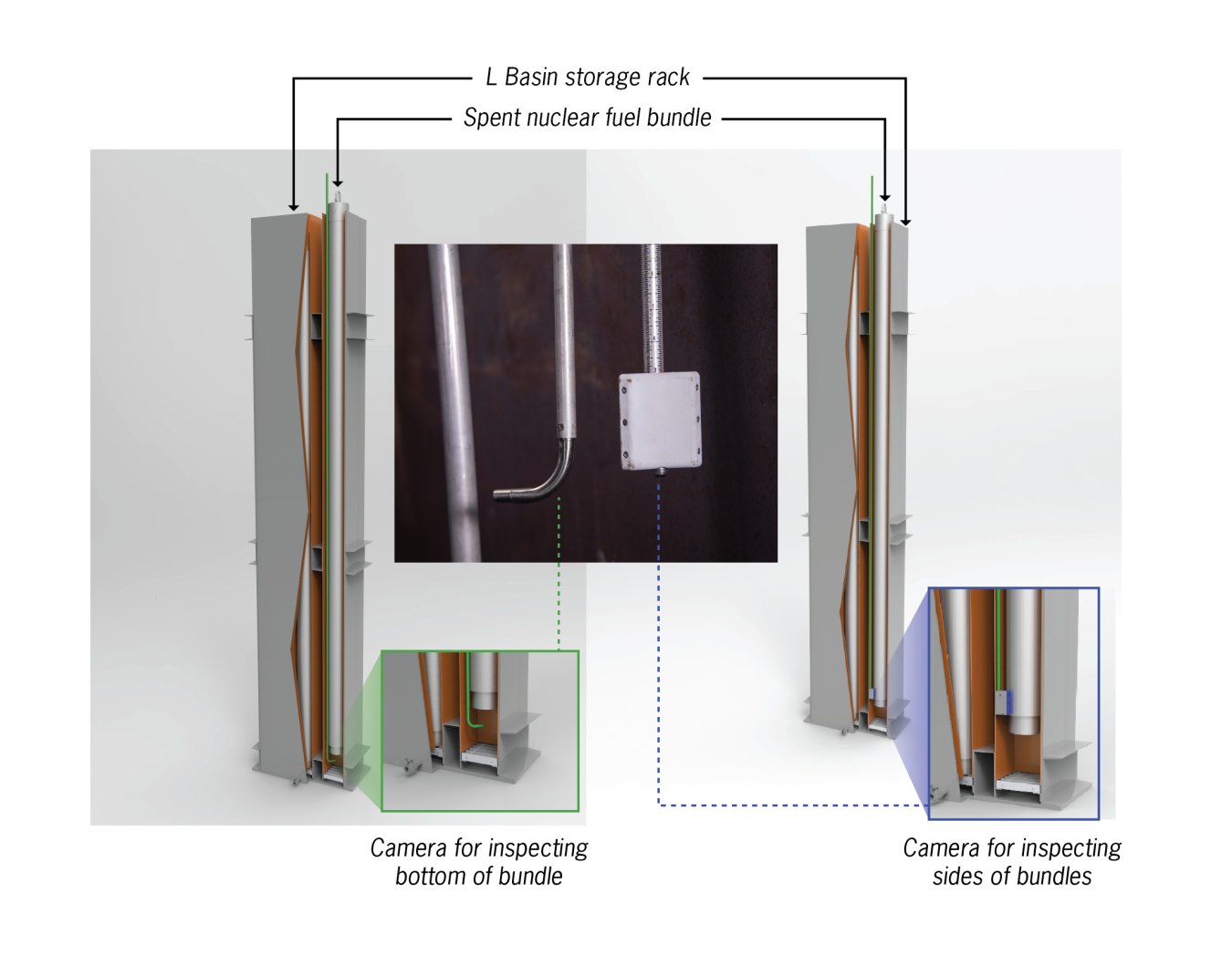SRNS employees at the SRS recently completed visual examinations of non-aluminum clad spent nuclear fuel bundles (SNF) stored in the L Area Disassembly Basin using underwater cameras for the first time.
May 24, 2021New Approach Implemented for Assessing Spent Nuclear Fuel Containers
AIKEN, S.C. (May 24, 2021) - Savannah River Nuclear Solutions (SRNS) employees at the Savannah River Site (SRS) recently completed visual examinations of non-aluminum clad spent nuclear fuel bundles (SNF) stored in the L Area Disassembly Basin using underwater cameras for the first time, which helps to ensure the integrity of the underwater storage systems for this fuel for an extended storage time.
Most SNF stored in L Basin is covered, or clad, in aluminum and then placed in aluminum bundles. However, a small portion of the fuel in L Basin is housed in aluminum bundles but clad in either zirconium alloy (zircalloy) or stainless steel.
“We needed a way to inspect the aluminum bundles that house non-aluminum clad spent nuclear fuel to make sure galvanic corrosion wasn’t occurring,” SRNS Augmented Monitoring and Condition Assessment Program (AMCAP) Manager Michelle Hromyak said. “Galvanic corrosion happens when two metals that are dissimilar in nature, in this case the aluminum bundles and the zircalloy or stainless steel clad spent nuclear fuel, are closely coupled underwater and one metal corrodes the other.”
AMCAP is a spent fuel program that provides non-destructive examination capabilities of the SNF to aid extended safe storage until its final disposition.
After specifically selecting the cameras to withstand the radiochemistry of the water while being submerged approximately 30 feet into the basin, SRNS worked with Savannah River National Laboratory (SRNL) to design the long-handed tools to hold the cameras during the inspections.
In advance of the examinations, SRNL and SRNS developed a mock-up to test the cameras and the accompanying long-handled tools.
“Over the next few years, we plan to continue visual examinations to ensure fuel integrity,” Hromyak said. “With SRNL’s help, we are also developing ultrasonic testing capability to validate the integrity of the fuel inside the bundles and determine if any worsening storage conditions are occurring that we cannot see with just visual examinations.”
Spent nuclear fuel is nuclear fuel that has been irradiated in a nuclear reactor. The spent nuclear fuel from the site’s former production reactors, and from foreign and domestic research reactor programs, is safely stored in an underwater storage facility in L Area, called a disassembly basin.
L Basin has concrete walls up to 7 feet thick and holds approximately 3.4 million gallons of water, with pool depths up to 50 feet. The basin water provides shielding to protect workers from radiation. Since 1964, SRS has received more than 2,400 casks containing over 47,500 spent nuclear fuel assemblies.
Principle Media Contact:
Lindsey MonBarren
Savannah River Nuclear Solutions
803.645.5455
lindsey.monbarren@srs.gov
DOE Media Contact:
Monte Volk
803.952.8283
monte.volk@srs.gov


